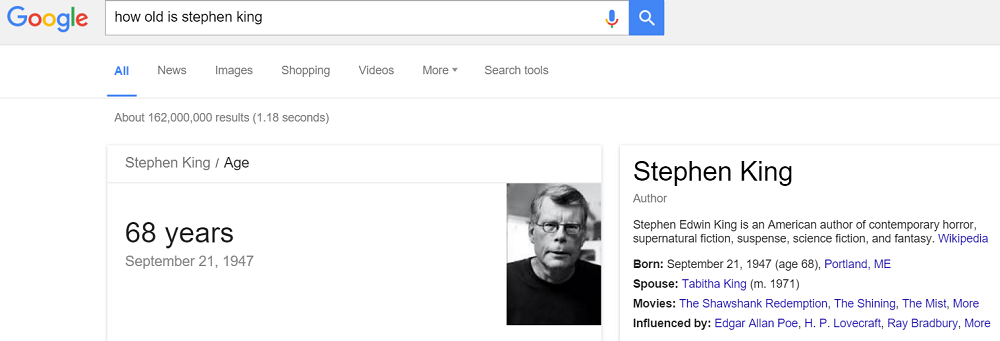

To the surprise and delight of many SEOs, Google recently released the full edition of its Search Quality Raters Guidelines – 160 pages of detailed instructions used to guide the thousands of humans that are paid to manually evaluate the quality of the search results returned by Google.
Although it doesn’t reveal the “secret sauce” to ranking number one on the Search Engine Results Pages (SERPs), the guidelines do provide valuable insight into what Google values, or finds undesirable, when evaluating a website or web pages.
It should be made clear that the human Search Quality Raters do not directly affect your search rankings; they are not actively voting websites up or down the SERPs – wouldn’t that be interesting? Instead, they are providing feedback to Google engineers on the accuracy and validity of the search algorithm and, in that way, are indirectly impacting future updates to the search algorithm.
The value to SEOs, web designers, and webmasters is that the Guidelines clearly outline the criteria that Google uses in evaluating a websites quality – an important element in search rankings.
Good search engines give results that are helpful for users in their specific language and locale. —Google
Google’s goal is to serve the best possible answer to the user’s search query. In order to measure their effectiveness, the rater needs to represent the user’s intent, location, and language when evaluating the search results pages.
So… what is Google looking for? You can download the full 160 page report here, or read on for a detailed summary of the Guidelines. Still TMI? Skip down to the bottom for the important take-aways.
Search Raters Guidelines
The overall Page Quality Rating Scale is a sliding scale from Lowest > Low > Medium > High > Highest quality.

In addition, Google differentiates between a regular website, and YMYLwebsites or pages.
YMYL stands for Your Money or Your Life content—content which could affect a person’s financial well-being, or mental and physical health (i.e. Financial Planning, Medicine, and shopping pages). YMYL sites are held to higher quality standards.
Search Rater Criteria
For a website or page to be rated as “High Quality”, it must meet at least one of the following criteria:
- A satisfying amount of high quality Main Content on that topic
- The author is considered to be an “expert, authority, and trustworthy” (E-A-T) for their topic
- The author and/or website has a good reputation around the topic
- There is strong supplemental content leading to a good user experience
- The website has a functional web design
- The website is well maintained
1. Quality of Main Content
Was the webpage created to help users? Helpful webpage functions may include:
- sharing information
- sharing media
- sharing opinions
- entertainment
- selling products or services
This can be determined by the Main Content of the page – the media that supports the primary purpose of the page.
The quality of the Main content is one of the most important factors in the page quality rating – it should be dependent on the perceived human effort and attention the page has received. The following should be considered to be rated as the “Lowest” quality:
- little time, effort, or expertise went into the creation of the content
- little helpful main content
- keyword stuffing
- auto-generated content
- copied from another source with little effort or expertise at adding value
- main content cannot be determined
Any page that is designed to harm or deceive users, or to deceive search engines, should receive a “Lowest” rating.
2. High Level of Expertise, Authoritativeness, and Trustworthiness (E-A-T)
While the standards for “expertise” depends on the subject area (i.e. medical vs hobby), the person or group behind the website should be considered to be trustworthy experts and authorities in their subject areas.
3. Website Reputation
A website’s reputation should be based on user experiences and the opinions of topical experts, and it should incorporate knowledge of both the website and the actual “brick and mortar” store.
Reputation data can be acquired through reviews, recommendations, ratings sites (like the Better Business Bureau), news and blog articles, and prestigious awards, among other sources.
While a page can be considered for a “High” quality rating with no reputation, a website with a negative reputation cannot be considered “High” quality no matter the other signals.
A very good reputation can be enough to move an otherwise “Medium” page to a “High” quality rating, whereas an extremely negative reputation should result in a “Lowest” rating.
4. Supplemental Content
Supplemental Content, content that supports the main content (i.e. links to related and helpful content – on or off the site, sidebar content, etc.), while part of a good user experience, is not considered when determining the page’s overall purpose.
It is possible for a page to receive a High, or Highest, rating with no supplemental content. However, if the ads or supplemental content distract from the main content, they are reason enough for a Low rating.
5. Functional Web Design
A well designed website or webpage is organized, uses space effectively and aides in the delivery of the overall purpose.
Considerations for a functional website:
- Can you tell who is responsible for the website?
- Is there a “Contact Us” page?
Considerations for a functional webpage:
- Main content is easy to find, understand, and consume.
- Ads should not distract from the main content.
- Ads should be easily identified.
- It does not matter how “pretty” a page is, only if it is functional.
The difference between a High ranked page and a Highest ranking is the quality of the main content, the site’s reputation, and the E-A-T of the content producer.
The Low rating could be applied to pages that:
- display poor quality or too little main content. This by itself is enough to support a low quality rating.
- are written by authors with little expertise in the subject area.
- are part of a website with a negative reputation.
- allows ads or supporting content to be distracting from main content.
- many visible ads when the page loads
- repeated insertion of ads
- invasive ads (pop-ups) that can’t be closed
- high ratio of ad content vs main content
- text ads placed within a site’s navigation
- are part of a poorly maintained website.
Note, the presence of ads alone do not imply a low quality page or website.
For YMYL websites/webpages, a low quality rating could be given for an unsatisfying amount of customer service information, contact information, or information related to the person responsible for the website/content.
6. Is the Website Being Maintained?
There may be signs that the website has not been maintained or updated – broken links, outdated or stagnant content, many spam comments, or its functioning poorly.
Although there is no set rule as to how often a website should be updated, a High quality site should be updated appropriately to meet its purpose (i.e. news site should be often whereas a family photo site may only be updated occasionally).
Guidelines for Mobile Queries
For Mobile Queries, the ratings are called Needs Met Ratings. The Needs Met scale ranges from:
Fully Meets > Highly Meets > Moderately Meets > Slightly Meets > Fails to Meet
- Fully Meets: Almost all mobile users would be satisfied with the result block that is displayed.
- Highly Meets: Most mobile users would be satisfied with the result.
- Moderately Meets: Many users would be satisfied with the results
- Slightly Meets: A few users would be satisfied with the results. Although the result is connected to the query, it is not a satisfying response to it – low quality, stale or out dated information, or too specific or broad.
- Fails to Meet: No, or very few, users would be satisfied with the results – unrelated to query, factually incorrect. Users would want to see additional results.
- Didn’t Load: Not able to view content.
- Hard to Use: Difficult to use on the small screen.
Guidelines for Product Queries
Pages where the visitor can purchase products or services will be subject to heightened scrutiny as they are usually YMYL pages (sometimes both). The website needs to be trustworthy, have a good reputation, and offer effective and easy to access customer support.
Duplicate Content Issues
If two landing pages offer the same content, and they wouldn’t both need to appear in the SERPs, they should be flagged as duplicate content. There are, however, times when duplicate content is okay. For some searches (i.e. song lyrics), users may want to be able to choose from more than one source.
Know and Know Simple Queries
What is the intent of the query? According to the Guidelines, they are:
- Knowledge Based – wants to know more about subject
- Do Something – accomplish something (i.e. download, buy, be entertained, obtain, or interact with)
- Website Query – searching for a specific website
- Visit-in-person – want information about specific business that they intend to visit (i.e. hours, prices, etc.)
Within the Guidelines, Knowledge Based queries are divided intoKnow queries, and Know Simple queries.
Know: Knowledge Based queries that are broad, ambiguous, or require in-depth information. (i.e. Stephen King)
Know Simple: Knowledge Based queries that have a very specific, generally accepted, short, answer. (i.e. How old is Stephen King?). It is the Know Simple queries that are sometimes featured as rich snippets in the search results (see image below)

SEO Takeaways
There’s not much in the way of new information for SEOs in this report, however, it does provide an overview of how Google (and its raters) judge the various ranking elements, and offers a more comprehensive, detailed description of Google’s view of “quality” content.
- Quality content is, of course, very important.
- Work to be an expert, authority, and trustworthy in your industry.
- Online and offline reputation will impact your ranking.
- Your website does not need to include all of the latest bells and whistles, but should be functional. Make it easy for users to find the information that they’re looking for.
- YMYL pages are viewed more critically.
- Include good supplemental content on your site.
- Ads are okay as long as they do not disrupt the user experience, or distract from the main content.
- Make sure your website is mobile-friendly.
- Check for broken links.
- Prevent or remove spam comments.
- Add fresh content to your website.
- Update stale or out-of-date content.
- Collect positive customer reviews.
- Make sure your contact information is available on your website.
- Answer common user queries concisely, at the beginning of your article, and use structured data markup on your webpages.
By reverse engineering these guidelines and applying the information to your website and marketing practices, you will establish a good foundation for SEO success and positive user experiences.
[“source-searchenginejournal”]

